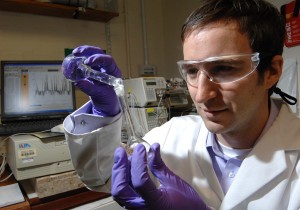MRSA, also known as Methicillin resistant Staphylococcus aureus is a bacterium which has caused many hard to beat infections in human beings. It is a bacterium which has evolved through natural selection to get high resistance to antibiotics of the beta-lactam variety such as penicillin (dicloxacillin, oxacillin, and methicillin) and cephalosporins.
It is very difficult to figure out how to treat mrsa with these normal antibiotics; hence it is more dangerous than normal bacterium strains. It is extremely dangerous for the patients with weaker immune systems such as those suffering from HIV/AIDS, tuberculosis and with open wounds.
Research on how to treat mrsa is very important in finding solutions to deal with this new problem. There are many departments which are involved in this research, such as the world health organization, the national institute of allergy and infectious diseases as well as many universities and private research institutes such as the duke clinical research institute.
Since MRSA, also known as the superbug, is a bacterium that keeps evolving and changing to fight off the newer and stronger antibiotics that are being designed by scientists to fight it, it is a very dangerous bacterium. Indeed, many researchers have complained that they are having a very hard time keeping up with the changes in the MRSA DNA and adaptations. Thus, research is very important for scientists to keep abreast with the new strains of the MRSA.
This research is very expensive and it is critical that the research organizations and universities that are involved in these studies are given increased financing for MRSA research.
Unfortunately, MRSA research is heavily underfunded. According to the website www.wired.com , for every death from MRSA, the USA federal research establishment awards $570.  For every death from AIDS, the US federal research establishment awards approximately $69,000 in grant funds. This website went on to say that this is despite the fact that MRSA “kills an estimated 19,000 Americans a year: more than HIV, and more than pneumococcal disease, meningococcal disease, Influenza and group A Streptococcus combined.” This is a very wide discrepancy, one that has to be bridged at once.
For every death from AIDS, the US federal research establishment awards approximately $69,000 in grant funds. This website went on to say that this is despite the fact that MRSA “kills an estimated 19,000 Americans a year: more than HIV, and more than pneumococcal disease, meningococcal disease, Influenza and group A Streptococcus combined.” This is a very wide discrepancy, one that has to be bridged at once.
One of the ways to increase how to treat mrsa research funding is to increase the publicity of the bacterium and the way it affects many lives all over the world. Many people, patients and affected families alike, are not aware of this threatening bacteria. By media campaigns, government increasing awareness and talk shows by doctors, this will be achieved.
As well as to look for new and innovative ways of funding from private sources. Any member of the public can send some small amount to how to treat mrsa research institutions and help to save lives.
In a nutshell, MRSA is a dangerous disease and the financing for its research must be increased commensurate with the threat it causes to the public and world populations at large.
To support this cause, check out the official Facebook Page for Online Health Spot.
